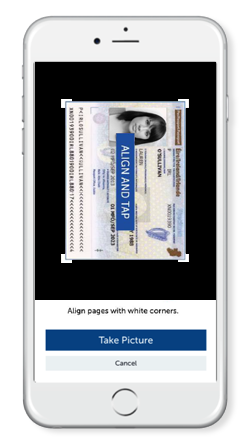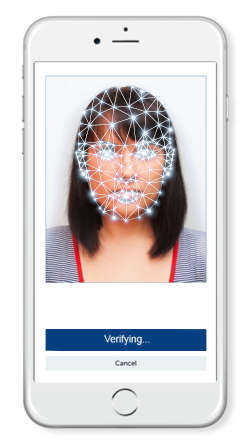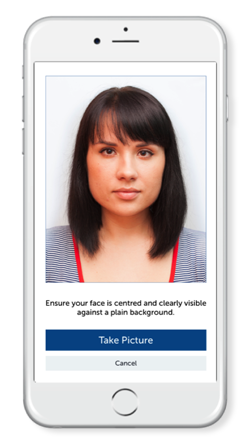Optical Character Recognition (OCR) is a technology that converts different types of documents, such as scanned paper documents, PDF files, or images captured by a digital camera, into editable and searchable data. The primary purpose of OCR is to recognise and extract text from these non-editable formats and convert it into machine-readable text.
The OCR process involves several steps:
- Image acquisition: The first step is to obtain the image or document that needs to be processed. This can be done by scanning a physical document or capturing an image using a digital camera or smartphone.
- Preprocessing: Before OCR can be applied, the image often undergoes preprocessing steps to enhance the quality of the text recognition. Common preprocessing steps include noise removal, skew correction, and binarisation (converting the image to black and white).
- Text recognition: In this step, the OCR software analyses the pre-processed image and attempts to recognise individual characters or symbols. Various algorithms and machine learning techniques are used to identify and classify the characters based on their shape and patterns.
- Post-processing: After the characters are recognised, post-processing techniques may be applied to improve the accuracy and layout of the extracted text. This includes tasks like spell-checking, text formatting, and language-specific optimisations.
- Output: The final output of the OCR process is typically a text document that can be edited, searched, and stored digitally. It enables users to work with the content of the document without the need for manual transcription.
OCR technology finds applications in a wide range of fields, including data entry, document digitisation, text translation, content indexing for search engines, and accessibility services for visually impaired individuals. It has become an essential tool in handling large volumes of physical and scanned documents efficiently and accurately.
How Does Optical Character Recognition Work?
Optical Character Recognition (OCR) is a complex process that involves several steps to convert images of text into machine-readable and editable text. Here's an overview of how OCR works:
- Image Acquisition: The process starts with obtaining an image or document that contains the text to be recognised. This image can be acquired by scanning a physical document, capturing a picture with a digital camera or smartphone, or loading an image file into the OCR software.
- Preprocessing: Before the OCR algorithms can be applied, the image is pre-processed to enhance the quality of the text recognition.
Common preprocessing steps include:
- Noise Removal: Removing unwanted elements from the image, such as speckles or dots, that could interfere with character recognition.
- Binarisation: Converting the image to binary format (black and white) to simplify character recognition. This is often achieved by thresholding, where pixels are classified as black or white based on their intensity levels.
- Skew Correction: Adjust the image to correct any tilting or rotation, ensuring the text lines are horizontal and vertical.
- Text Recognition: The core step of OCR is actual text recognition. Various techniques can be used, but the most common approach is based on pattern recognition and machine learning. Here's how it generally works:
- Character Segmentation: The image is analysed to locate individual characters or text regions. This step involves identifying spaces between characters and lines of text.
- Feature Extraction: Once characters are identified, their features (e.g., shape, lines, curves) are extracted to create a representation that the OCR algorithm can analyse and compare against known character patterns.
- Classification: The extracted features are matched against a database of pre-trained character patterns. Machine learning algorithms, such as neural networks or statistical models, are often used to determine the most probable character for each extracted feature.
- Post-processing: After the characters are recognised, post-processing techniques are applied to improve the accuracy and layout of the extracted text. Some common post-processing steps include:
- Spell-checking: Correcting recognised words with potential spelling errors.
- Text Formatting: Restoring the original layout, font, and style of the text to improve readability.
- Language-specific Optimisations: Making language-specific corrections or adjustments based on grammar and contextual rules.
- Output: The final output of the OCR process is a machine-readable text document, which can be edited, searched, and stored digitally.
It's important to note that OCR accuracy can vary depending on factors such as image quality, font type, language, and layout complexity. Advanced OCR technologies incorporate deep learning and artificial intelligence techniques to continually improve accuracy and handle a wide range of document types and languages.
How Does Optical Character Recognition Work with Identity Verification?
Optical Character Recognition (OCR) plays a crucial role in several KYC solutions by automating the extraction of information from identity documents, such as passports, driver's licenses, and national ID cards. Here's how OCR is typically used in
- Document Scanning: The identity document is scanned using a physical scanner, or an image of the document is captured using a digital camera or smartphone. This step is essential to obtain a clear and high-quality image of the document.
- OCR Processing: The scanned or captured image is processed through OCR software. The OCR algorithms analyse the image, recognise the text, and extract relevant information, such as name, date of birth, document number, and other personal details, from the identity document.
- Data Extraction: The OCR system extracts the recognized text and converts it into a machine-readable format. This extracted data is then used in the identity verification process.
- Data Verification The extracted data is compared against the required information for identity verification. The system checks the accuracy and validity of the data against predefined rules and databases to ensure it matches the expected values.
- Security Features Detection: In addition to text extraction, OCR systems may also analyse the identity document's security features, such as holograms, watermarks, or specific patterns, to further verify its authenticity. These security features can help prevent fraudulent documents from passing the verification process.
- Liveness Detection (Optional): In some advanced identity verification systems, liveness detection may be employed to ensure that the identity document is being presented in real-time and not just a static image. This helps prevent spoofing attempts using photographs or pre-recorded videos.
- Result Generation: Based on the data extraction, security feature analysis, and liveness detection (if used), the identity verification system generates a verification result, indicating whether the presented document and the extracted information are valid and accurate.
OCR technology significantly accelerates the electronic ID verification process by automating the data extraction from identity documents. It reduces manual efforts, improves accuracy, and enhances overall efficiency in various industries, such as finance, healthcare, travel, and government services, where identity verification is crucial for security and compliance purposes. However, while OCR is a powerful tool, it is essential to have additional security measures in place to counter potential fraud attempts and ensure robust identity verification.



What Should Organisations Look for in an Optical Character Recognition (OCR) Technology Provider?
When organisations are looking for an Optical Character Recognition (OCR) technology provider, several key factors should be considered to ensure they choose a reliable and suitable solution. Here are some important aspects to look for:
- Accuracy and Performance: The primary goal of OCR is to achieve high accuracy in character recognition. Look for a provider that offers state-of-the-art OCR algorithms with excellent performance on a wide range of documents and languages. Accuracy is critical, especially in applications like data entry and identity verification.
- Language Support: Ensure that the OCR technology supports the languages and character sets relevant to your organisation's needs. A robust OCR system should be capable of recognising text in multiple languages, including complex scripts and special characters.
- Document Type Support: Consider the types of documents your organisation deals with regularly and verify that the OCR technology can handle various document formats, such as scanned papers, PDFs, images, and screenshots.
- Integration and Compatibility: Check if the OCR solution can integrate seamlessly with your existing systems and workflows. It should be compatible with your software, databases, and document management systems to streamline the implementation process.
- Processing Speed: Depending on your organisation's requirements, speed might be a crucial factor. Evaluate the OCR provider's processing speed and ensure it meets your desired throughput and response times.
- Security and Compliance: For applications that involve sensitive data, such as identity verification or financial transactions, security is paramount. Look for an OCR technology provider that adheres to strict data security standards and complies with relevant regulations, such as GDPR (General Data Protection Regulation).
- Customisation and Flexibility: Every organisation has unique needs, so the OCR technology should offer customisation options. Look for a provider that allows you to fine-tune the OCR settings to optimise recognition for your specific use cases.
- Support and Documentation: A reputable OCR technology provider should offer comprehensive documentation, guides, and customer support. Look for accessible resources and responsive customer service to assist you with any issues or questions that may arise.
- API and SDK Availability: If your organisation requires integration with custom applications or services, ensure that the OCR technology provider offers API (Application Programming Interface) or SDK (Software Development Kit) access.
- Scalability and Reliability: Consider the scalability of the OCR solution to accommodate potential growth in document processing needs. Additionally, look for a provider with a proven track record of reliability to ensure smooth and uninterrupted operations.
- Demo and Trial Whenever possible, try out the OCR technology through demos or free trials. This allows your organisation to assess its performance and suitability before making a final decision.
By carefully considering these factors and conducting thorough research, organisations can choose an OCR technology provider that best aligns with their specific requirements and provides a reliable and effective solution for their document processing needs.



